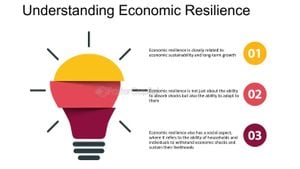The recent fluctuations and trends observed across the U.S. and global financial markets have sparked significant interest among investors and analysts alike. Central banks around the world are maintaining heightened vigilance as they navigate inflationary pressures, labor market dynamics, and changing consumer sentiment.
The USD/JPY pair has been particularly hot this week, driven by the contrasting monetary policies of the Federal Reserve and the Bank of Japan (BoJ). The Fed is expected to gradually lower borrowing costs, partly due to resilient job growth and manufacturing sectors evident from the recent economic data. Meanwhile, inflation figures from Japan showed signs of easing, which complicates the BoJ’s previous inclination toward rate hikes.
Starting off, U.S. jobless claims have dropped more than expected, hinting at continued demand for labor. This positive news is supported by Purchasing Managers' Index (PMI) readings indicating growth within both manufacturing and service sectors. The overall economic strength is diminishing immediate pressures on the Fed to enact significant rate cuts, which might lead to fewer rate adjustments this November.
Across the Pacific, Tokyo's Consumer Price Index (CPI) revealed inflation easing below the central bank's 2% target. Reports showed weak consumer spending amid rising costs, challenging the BoJ’s outlook. Analysts, including recent comments from government officials, suggest the economy is not prepared for substantial rate hikes just yet.
A look at upcoming events this week reveals several central economic indicators expected to shape market trends. On Tuesday, the U.S. will release data on job openings and consumer confidence, with expectations for job openings to decrease slightly but maintain low risks for job losses. On Wednesday, the economic focus will pivot to Australia's CPI measures and labor reports. The quarterly CPI is forecasted to drop, reflecting slower inflation and lower price growth.
Interest turns back to the U.S. on Thursday, when the markets expect updates on the personal consumption expenditures (PCE) index, unemployment claims, and employment cost index. PCE is closely monitored for its correlation with Fed policy, and anticipated figures suggest stability with minor changes.
It’s noteworthy as the interest rate environment globally is being shaped by changes within key economies. The Reserve Bank of Australia appears less hawkish than before, signaling no immediate rate hikes on the horizon, which may play nicely with the U.S.’s economic dynamics.
Meanwhile, next week will be pivotal for the Bank of Japan as they convene to review their policies. Analysts predict the central bank will maintain its current stance, setting the stage for future adjustments depending on inflation metrics and the state of global markets.
Market forecasts are fluctuative, especially considering pivotal reports such as the U.S. Non-Farm Payrolls (NFP) this Friday, with expectations showing lower job additions compared to previous months. This will be particularly telling for how the Fed might position themselves as they assess labor market health against inflationary pressures.
Technical analysis also plays its part this week. The USD/JPY rate is nearing key resistance levels, particularly around the 153 mark. The market sentiment remains bullish overall, fueled by economic recovery signals and aggressive buying. Traders are closely examining these levels, as they could dictate movements based on subsequent data releases.
The week is characterized by fluctuated expectations from global economic players, as confidence ebbs and flows with the backdrop of uncertainty surrounding geopolitical dynamics and possible economic slowdowns. Firms such as Goldman Sachs are observing trends carefully, especially with 10-year yield levels drawing attention as potential risk appetite indicators.
Looking toward the end of the week, the U.S. elections are also on the radar, placing additional emphasis on economic performance analysis. Businesses are citing uncertainty surrounding the elections, which may shift market perceptions regardless of economic data coming through.
All things considered, as the international financial community braces for more economic reports and updates, the interplay of rates, inflation, and labor demand will be key factors shaping investment strategies as we move forward. Stakeholders will maintain their watchful eye on how policy decisions affect both U.S. and global positions.



